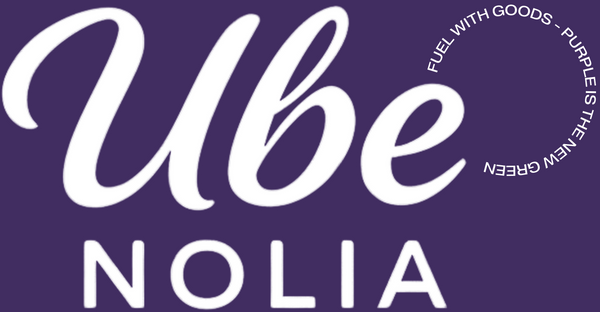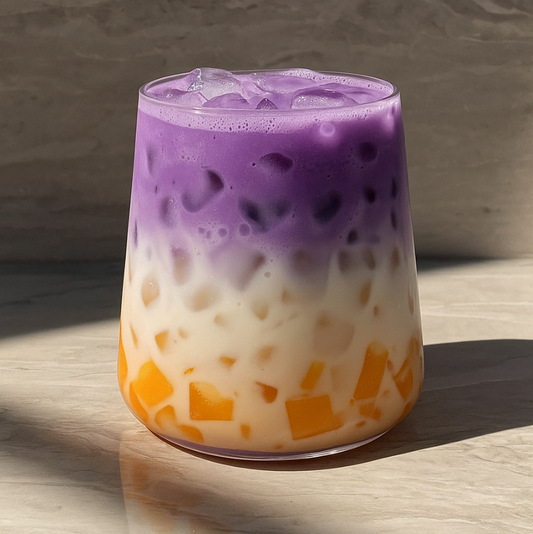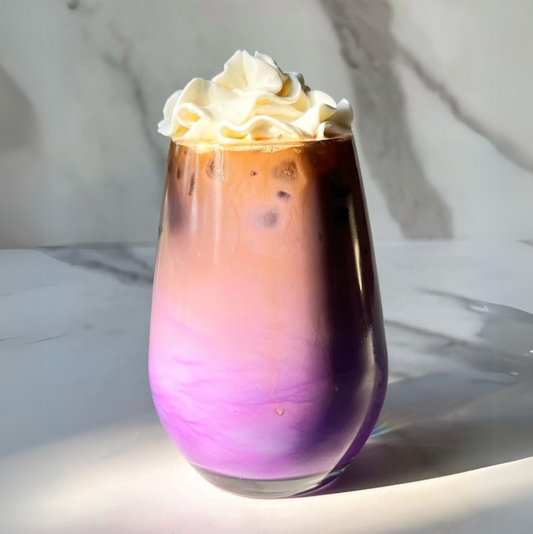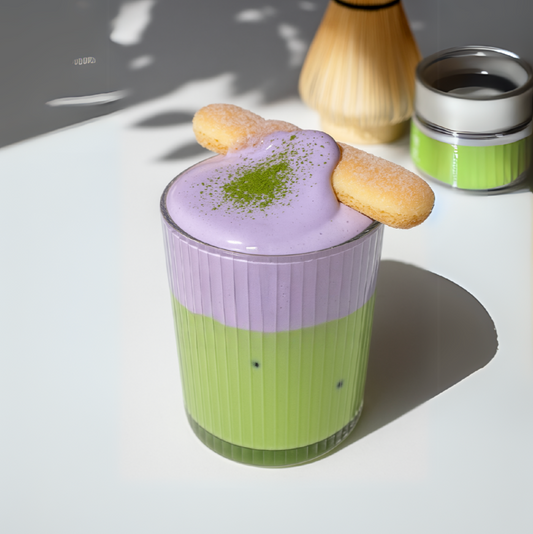🇪🇺 EU (Europe)
Ube Powder Benefits: The Complete Guide to Purple Yam
This “ube powder benefits” guide covers the nutrition value, everyday uses, and quality criteria of premium ube powder (Dioscorea alata), the naturally purple yam from the Philippines.
You may also like this article: Ube Benefits for Skin & Hair

🌿 What is ube powder?
Ube is a purple-fleshed yam rich in anthocyanins (antioxidants). Gentle drying and micronizing turn it into a convenient, stable ube powder with a delicate vanilla–hazelnut profile, striking color, and an interesting mix of fiber, complex carbs, vitamins and minerals.
When 100% pure, it contains no added sugar or dyes and blends into lattes, smoothies, pastries, creams, and ice cream—plus a few savory ideas.
💜 Ube powder benefits at a glance
- Antioxidants (anthocyanins) to limit oxidative stress.
- Fiber for satiety and digestive comfort.
- Complex carbs for steadier energy.
- No added sugar in 100% pure powders.
- Versatile in drinks and desserts.
- Natural purple color without artificial dyes.
🔎 Key benefits explained
1) Antioxidants
Purple color = anthocyanins, like blueberries.
2) Fiber
Fine-grind powders add fiber for fullness and regularity.
3) Complex carbs
Gradual release for steady energy.
4) Moderate glycemic impact
Pair with unsweetened bases.
5) Vitamins/minerals
Potential vitamin C and potassium contributions.
6) Pleasure factor
Vanilla/hazelnut notes help reduce added sugar.
7) 100% natural coloring
Vivid purple, no artificial dyes.
8) Culinary versatility
Ube latte, panna cotta, ice cream, muffins (1–2% in pastry; ~2–3 g/250 ml in drinks).
9) Fits many patterns
Gluten-free by nature; vegan-friendly if 100% pure.
🍽️ How to use ube powder (dosage & ideas)
- Ube latte: ~2–3 g per 250 ml (unsweetened milk). Sweeten lightly if needed.
- Smoothies/bowls: 1–2 tsp with banana, plain yogurt, almond milk, seeds.
- Pastry: 1–2% of flour weight (muffins, cookies, cakes).
- Creams & ice cream: 1–2% of base; chill to set color/texture.
- Savory: micro-doses for visual flair in purées/white dips.
⚖️ Ube powder & balanced eating
Fiber-driven satiety + naturally sweet notes help trim added sugar. Pair with unsweetened bases, protein and good fats for complete snacks.
🥤 3 quick ideas
- Simple violet latte: 250 ml almond milk, 2.5 g ube powder, 1 tsp syrup; hot or iced.
- Antioxidant smoothie: banana, yogurt, 1 tsp ube, blueberries, oat milk.
- Greek yogurt + ube: yogurt, 1 tsp ube, crushed nuts, maple drizzle.
🧑🍳 Common mistakes
- Over-sweetening;
- Over-dosing powder for color instead of flavor;
- Skipping sifting/pre-mixing for solubility;
- Ignoring traceability.
🛒 Buying guide
- 100% ube, no additives/colors/sugar;
- Origin (e.g., Dagupan/Urdaneta, Philippines);
- Gentle drying, fine grind;
- Testing (pesticides/microbiology, COA/TDS);
- DIY tests: latte + small cream.
❓ FAQ
Natural sugar? 100% pure powders have no added sugar; sweetness is mostly aromatic.
Daily use? Yes, within a varied diet.
Heat impact? Gentle cooking preserves color/aroma better.
🔗 Related
You might also like: Ube benefits for skin & hair
✅ Conclusion
Antioxidants, fiber, complex carbs, standout color, and versatility—that’s the ube powder package. Choose 100% pure, traceable quality for the best experience.
Get it now to make delicious recipes: lattes, cakes, bread…












